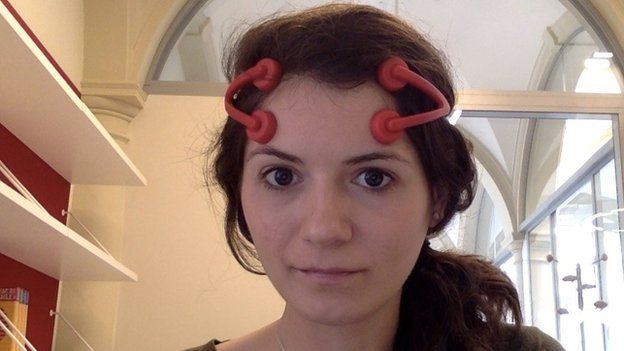
Brain Zap for Better Vision
Lasik, lenses, and glasses address vision problems directly through the eyes, but now scientists have found a way around blurry vision by doing something to the brain instead. A mild 20-minute zap straight into the visual cortex of the brain has been found to temporarily improve vision for up to two hours in an experiment conducted on 20 young, healthy participants.
The transcranial direct-current stimulation (tDCS) also had a ‘normalizing’ effect: the worse the individual’s eyesight was, the bigger the improvement was; those who had normal (or close-to-normal) vision did not see much difference.

To be clear, the procedure is not a substitute for glasses or Lasik, as it does not improve eye condition. Researchers theorize that the electricity boosts visual signals for faster processing in the brain, so while it does not treat eye problems, it improves the way the brain processes visuals minus the noise and blur.
Proceed with Caution
Electrical brain stimulation has been known for improving memory, creativity, and boosting overall cognitive processes as well as alleviating depression. But before you go buy a tDCS kit (or make one yourself), know that electrical brain stimulation comes with a warning: it can cause mood changes, seizures, and other long-term effects that we have yet to identify. In fact, even when performed under lab supervision, the procedure is done for no more than 20 minutes at a time— and only on people who have passed specific medical tests prior to undergoing the procedure.

Calls for the control of commercial devices have been issued by researchers. Nick Davis, senior lecturer in psychology at the Manchester Metropolitan University wrote a plea for caution on the use of such devices: “It seems likely that repeated sessions of TMS (transcranial magnetic stimulation) or tCS lead to longer-lasting neural effects; these long-duration effects are what makes brain stimulation an attractive possibility for clinical treatment. However, no brain region exists in isolation, and researchers are only now beginning to understand the knock-on effects of modulating one brain area on other areas in the brain.”
So while this study shows tDCS is valuable in future research on how the visual system works, it would be best to hold off on using these commercial devices until further studies prove it’s safe.